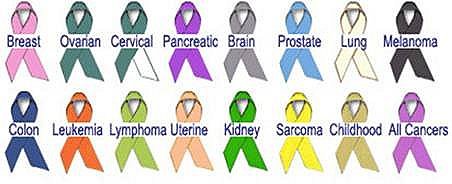

 Wikipedia Sitemap |
|
|  Useful Links 1 Useful Links 2 |

If there is one cancer that men identify with, it has to be prostate cancer. There exists a quiet, almost gentlemen like but anxious approach to this topic in contrast to cervical or breast cancers. My hockey buds turn knock-kneed and drop the soap at the mere mention of "prostate". For the most part, it is a disease of the older male, and is a leading cause of cancer, illness and mortality in Canada. In 2007, over 22,300 men received a new diagnosis of prostate cancer. More elderly Canadian men with prostate cancer die of other causes than directly as a result of it. For the most part, it is largely silent in the early stages. Some men suffer symptoms associated with benign enlargement of the prostate and seek attention in that regard. This commonly consists of more frequent urination or mild erectile difficulty.
The prostate is a male secretory organ. It is made up of fatty tissue, which tends to absorb and bind toxins over the years. Family doctors screen for prostate cancer by examining it indirectly. This consists of the famous and much maligned "digital rectal examination". The prostate can be felt because the wall of the rectum is rather thin - 3 inches, and allows the finger to feel unusual lumps and growths on the surface of the prostate. This is merely an explanation and is not a plug for self-examination.
The other screening method is to run a blood test called the Prostatic Specific Antigen (PSA). It has been around for almost a quarter of a century and currently is all we have in the OHIP system. PSA is a protein produced by normal and, in most cases, abnormal prostate tissue. All healthy men have a detectable level, and most are eager to know their numbers. Prostate cancers that produce this marker are able to give us some early warning, but up to 15% of the cancers don't produce PSA. Other diagnoses, such as infection, can also raise PSA levels. But U.S. researchers are working on a new urine test that would check for four different RNA biomarkers with an 80% accuracy level.
Once we are suspicious of prostate cancer, a referral is made to a urologist who will often perform an ultrasound guided transrectal biopsy of the prostate to obtain some tissue and confirm the diagnosis. Treatment options are multiple. In some cases, we simply monitor levels. When the disease is confined to the prostate area only, surgery to remove the prostate is an excellent choice. Chemotherapy has been of limited use to prostate cancer patients. Radiation therapy is the more common approach. The usual manner is to use regular radiation treatments or to implant radiation pellets that exert their effects in the area of the tumor. The Americans are playing with various off-shoots of this technology such as high-intensity focused ultrasound. The problem with prostate cancer is that we have a hard time recognizing which ones spread quickly and which sit quietly for years. But new research may be making progress in this regard. It seems that a biomarker present in the blood of prostate patients called "endoglin" may predict cancer spread. It also seems to predict spread in colon and breast cancer patients as well.
There is a lot of new knowledge coming online with respect to prostate cancer. Being aware of it is half the battle. Prostate cancer screening in Canada begins between age 45 to 50, and earlier for those with an early family history or urinary symptoms. So if you haven't had your screening performed yet, it is time to bare the cheeks! It could prolong your life.

Related resources:
● Prostate cancer from Wikipedia, the free encyclopedia.
● Prostate Cancer from MedicineNet.com. What is the prostate gland? (Illustrated). What causes prostate cancer? What are the symptoms of prostate cancer? What are false-positive elevations in the PSA test? How is prostate cancer diagnosed? What are the treatment options for prostate cancer?
● Prostate Cancer from MedlinePlus. "Prostate cancer is the third most common cause of death from cancer in men of all ages. It is rare in men younger than 40. Levels of a substance called prostate specific antigen (PSA) is often high in men with prostate cancer."
● Prostate Cancer from MayoClinic.com. Definition, Symptoms, Causes, Risk factors, Tests and diagnosis, Complications, Treatments and drugs, Prevention, Coping and support, Alternative medicine.